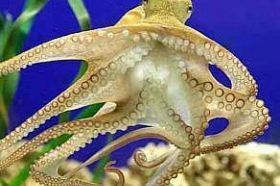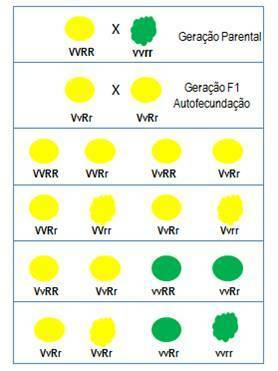Molluscs are soft-bodied animals, usually encased in a shell.
The shell is present in oysters, shellfish, snails and snails. In some, such as squid, the shell is internal and in others it is absent, as in octopus.
Shells are important to protect the mollusc's soft body and prevent water loss.
Molluscs live in marine or freshwater aquatic environments and in wet terrestrial environments.
the phylum mollusk it is the second largest in number of species, approximately 50,000, only behind arthropods.
Features
These animals have their bodies divided into: head, foot and visceral mass. The sense organs are found in the head.
The foot is responsible for movement and, in some animals, such as the octopus, it can be replaced by tentacles. The visceral mass is where all the organs are found.
Food and Digestive System
Molluscs have a complete digestive system, with a mouth and anus. Food is transported through the digestive tract, where it undergoes the action of enzymes. Nutrients are absorbed and distributed throughout the body through the blood.
Cephalopods and gastropods have the radula, a kind of tongue with sharp teeth, used to scrape food.
Breathing
Because molluscs are found in a wide variety of environments, they have different types of respiration.
- THE gill breathing it is carried out by molluscs that live in water, such as octopus, squid and oysters.
- THE lung breathing it is present in molluscs that live in a terrestrial environment, such as snails.
- THE skin breathing it occurs with slugs that also live in terrestrial, underground and in trees.
Circulatory system
The circulatory system distributes nutrients and oxygen to the digestive and respiratory systems. The excretory system removes metabolic waste and eliminates them.
The circulatory system is open, and the heart lies dorsally in the visceral mass. The heart's contractions send the body, blood flowing to the vessels and then through gaps located between the tissues.
reproduction
The molluscs present sexual reproduction, with internal or external fertilization. Most molluscs have separate sexes, with the exception of bivalves, which are hermaphrodites.
In external fertilization, males release sperm and females release eggs directly into the water, where the two gametes meet.
In the case of internal fertilization, sperm are released into the female's body.
Classification
Molluscs are animals that have a great diversity of shapes and sizes. They fall into three main classes: gastropods, bivalves and cephalopods.
gastropods

Gastropods are molluscs that have a single-piece spiral shell. Examples of gastropods are snails, snails and slugs. They represent the largest group of molluscs.
Its visceral mass is inside the shell, constituting a single piece. They use their feet for locomotion.
Gastropods are animals terrestrial invertebrates.
Bivalves or Pelecipods

Bivalves are molluscs from a marine environment, formed by two articulated shells joined by a ligament. Examples of shellfish are shellfish, oysters and scallops.
Between the two shells is the animal's body, made up of the foot and the visceral mass. The foot is small or absent.
Cephalopods

Cephalopods do not have a shell or an internal shell. Examples of cephalopods are octopus, squid and nautilus.
They are the most complex molluscs, with a well-developed nervous system and eyes similar to those of vertebrates.
Tentacles leave from the head, eight in the octopus and ten in the squid. The tentacles have suction cups that can serve to capture prey or attach the animal to a substrate such as rock.
The octopus has, connected to the intestine, the ink gland. When the animal is attacked, the gland expels ink, confusing the predator and facilitating the octopus' escape.
Cephalopods and bivalves are animals aquatic invertebrates.
Curiosities
- In the Pacific Ocean, there are huge shellfish, with more than 1 meter in diameter and about 300 kilos.
- Squid can reach 15 meters in length.
- Escargot, a type of snail that is much appreciated as food, is bred with special care in terms of feeding, temperature and environmental humidity.
- The production of pearls by oysters is of great economic importance. The shells can be used to make buttons, combs and other objects.
- You annelids have some characteristics similar to molluscs. Both have a soft body and inhabit humid environments. However, annelids do not have any kind of protective shell.
Learn more about the Invertebrate Animals.


